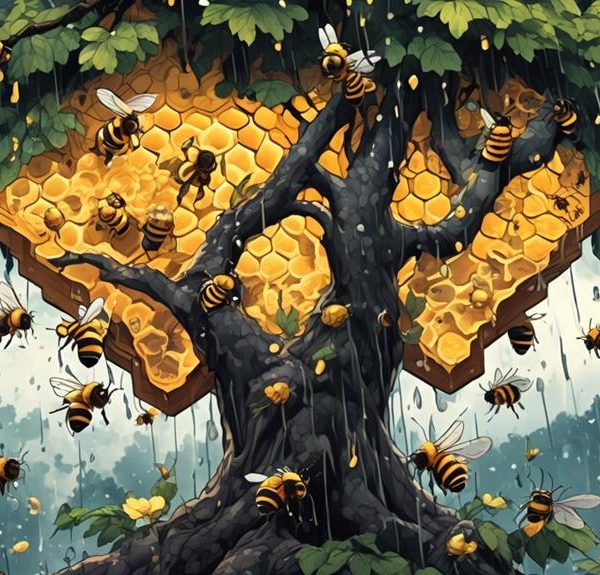Unravel the mystery of why bees ball up—an intriguing hive behavior that's been puzzling entomologists and beekeepers alike.
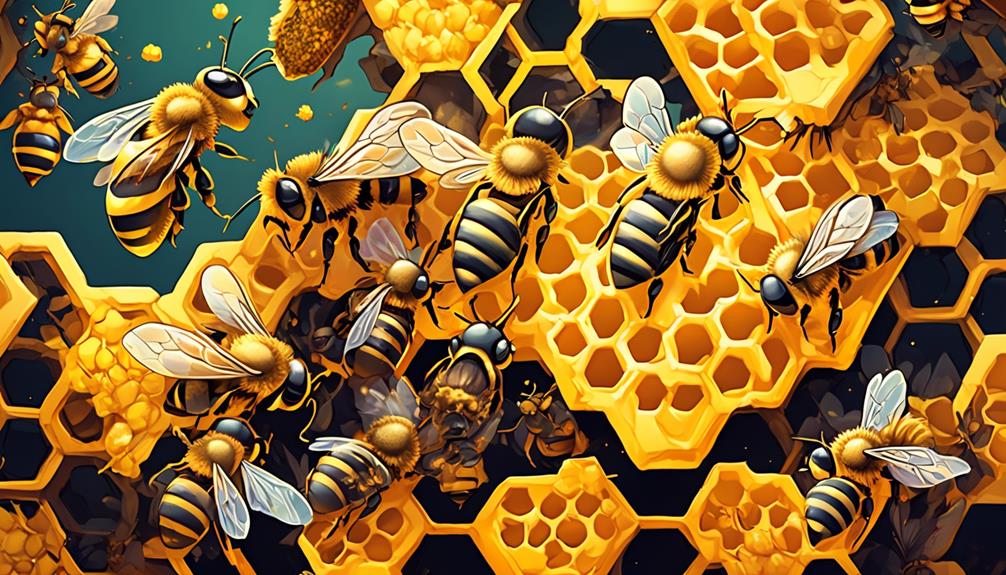
Why Do Bees Ball up?
Did you know that a single ball of bees can contain up to 500 individuals? This fascinating behavior, known as 'balling,' is a peculiar phenomenon that has intrigued entomologists and beekeepers alike.
You might wonder why these buzzing creatures, generally considered lone workers, would gather together in such a tightly-knit formation. Is it a form of protection, or perhaps a social behavior?
The answer isn't as straightforward as you might think, and as you explore more, you'll uncover the peculiar intricacies of hive mentality and their survival tactics.
Key Takeaways
- Bee balling is a collective defense mechanism used by bees to protect against intruders, such as wasps or hornets.
- Bees form a tight ball around the intruder and vibrate their flight muscles to raise the temperature within the ball, effectively cooking the intruder.
- Bee balling also serves as a way to keep the queen bee warm during cold weather, with worker bees clustering around her to raise the temperature within the ball.
- Bee balling plays a crucial role in maintaining the balance of ecosystems by eliminating potential threats to bee populations and supporting plant reproduction through pollination.
Understanding Bee Behavior
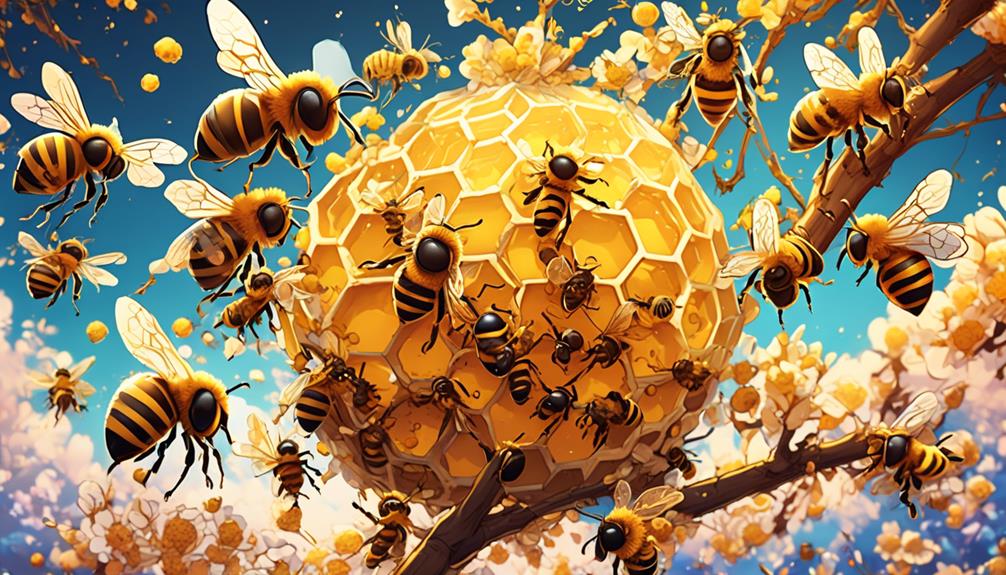
To delve into understanding bee behavior, you must first appreciate the complex, coordinated activities these insects perform, such as balling up, which is rooted in their intricate social structure and survival instincts. This act, also known as 'bee balling' is a defense mechanism, primarily used against threats like wasps or rogue queen bees.
The process is fascinatingly strategic. When a threat enters the hive, worker bees swarm the intruder, completely enveloping it in a tight ball of buzzing bodies. This isn't just a chaotic mob; it's a calculated move. They're raising the temperature within the ball, effectively cooking the intruder alive. This is possible due to their higher heat tolerance compared to most invaders.
Comprehending bee behavior, therefore, isn't just about observing. It's about understanding the rationale behind their actions. Every buzz, every movement is purposeful, driven by a collective goal: survival. It's a testament to their advanced social structure, where tasks are distributed and every bee has a role to play for the colony's welfare.
The Phenomenon of Bee Balling
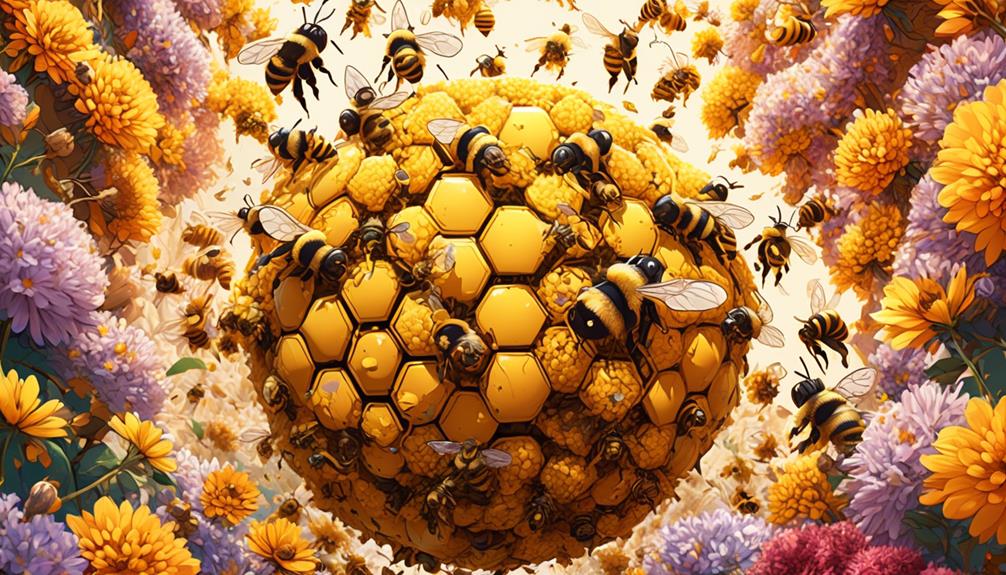
Now let's examine the phenomenon of bee balling more closely, unpacking the intricate details of this remarkable defensive strategy.
When you witness bee balling, you're observing a collective defense mechanism primarily used by honeybees. It's an incredible spectacle of nature, revealing the sophisticated social structure of bee colonies.
Imagine an intruder, like a wasp, enters a beehive. The bees don't just attack it. Instead, they swarm around the trespasser, forming a tight, ball-like structure. This isn't a random act, but a strategic move.
The bees vibrate their flight muscles intensely, raising the temperature within the ball and effectively 'cooking' the invader. Interestingly, honeybees can withstand higher temperatures than their enemies, so they survive this process unharmed. This is a clear illustration of adaptive evolution, where bees have developed a specialized defense that exploits the physiological weaknesses of their predators.
Bee balling also demonstrates the incredible level of cooperation and communication within a bee colony. Each bee plays a part in defending the hive, working together in unison. It's a fascinating display of collective behavior, showing us just how intricate and complex the world of bees really is.
Reasons Bees Form Balls
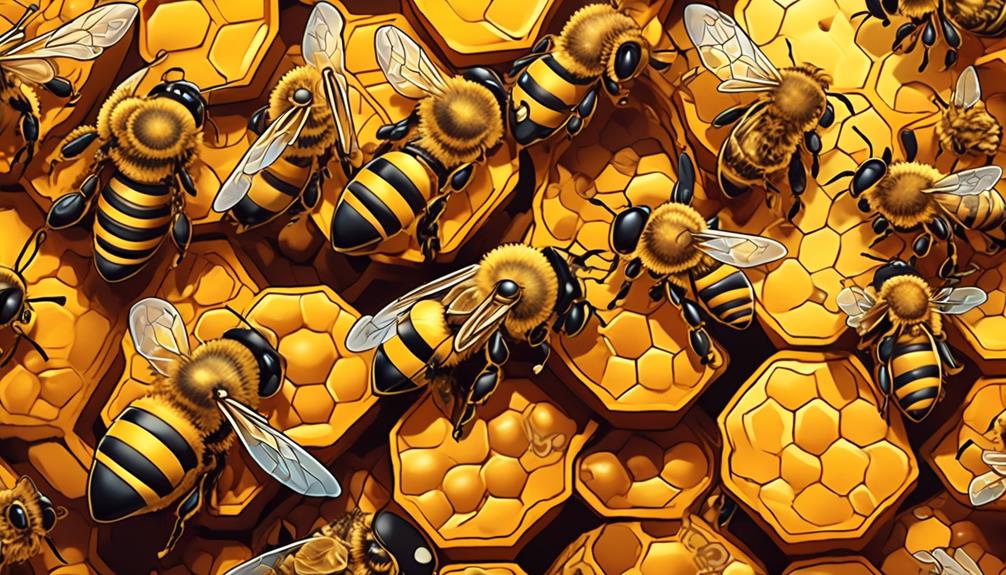
Why do bees form these fascinating balls, you might wonder? The answer lies primarily in their complex social behavior and defense mechanisms.
Bees typically form balls as a defense strategy against predators, especially hornets. When a hornet invades a beehive, worker bees surround the intruder, forming a tight ball. They then begin to vibrate, raising the temperature within the ball, effectively cooking the hornet alive.
Predatory Threat | Defensive Strategy | Outcome |
|---|---|---|
Hornet invades hive | Bees form a ball | Hornet is overheated |
The other reason is to keep their queen warm during cold months. In this case, worker bees cluster around their queen, forming a compact ball. Their body heat raises the temperature within the ball, ensuring their queen's survival.
Environmental Condition | Survival Strategy | Outcome |
|---|---|---|
Cold weather | Bees form a ball around queen | Queen stays warm |
It's a fascinating demonstration of how bees use collective behavior for self-defense and survival. Studying these behaviors not only provides insights into bee society but also inspires innovative solutions in our own human societies.
Defensive Mechanism in Bees
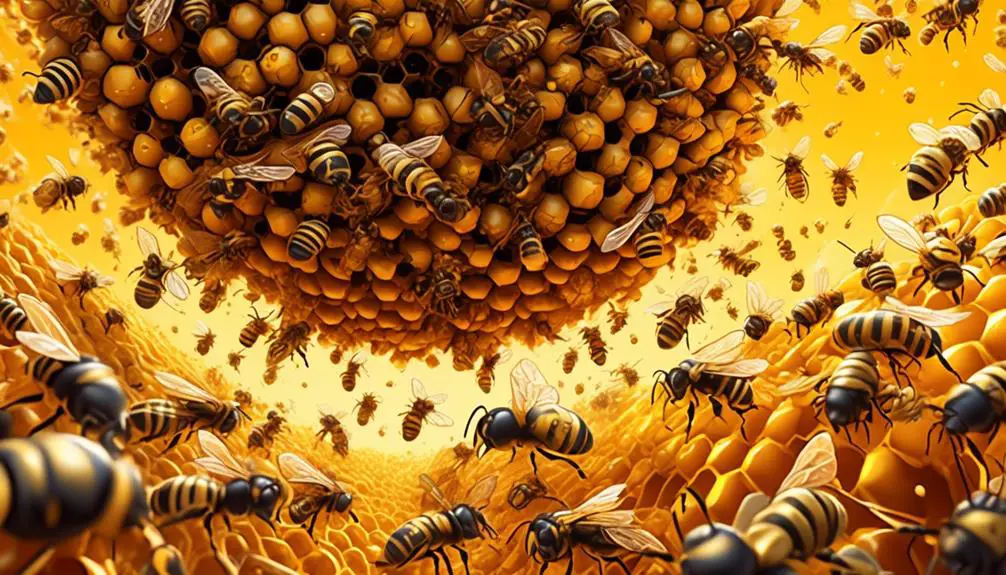
Understanding the defensive mechanisms of bees can offer valuable insights into their complex social structure and survival strategies. To start with, you should know that these insects employ both passive and active defense methods.
Passively, bees rely on their conspicuous yellow and black coloration to deter potential predators. This is a phenomenon known as aposematism, where bright patterns serve as a warning sign.
Actively, however, bees resort to stinging, a tactic that's only used as a last resort due to its fatal consequences for the bee.
Now, let's delve into the fascinating tactic of 'balling'. In this strategy, bees swarm around the intruder, creating a tight ball. The bees vibrate their wing muscles, generating heat and increasing the temperature within the ball. This process is called thermogenesis. The high temperature, combined with the lack of oxygen, effectively suffocates the intruder, protecting the hive.
Bee Colony Social Structures
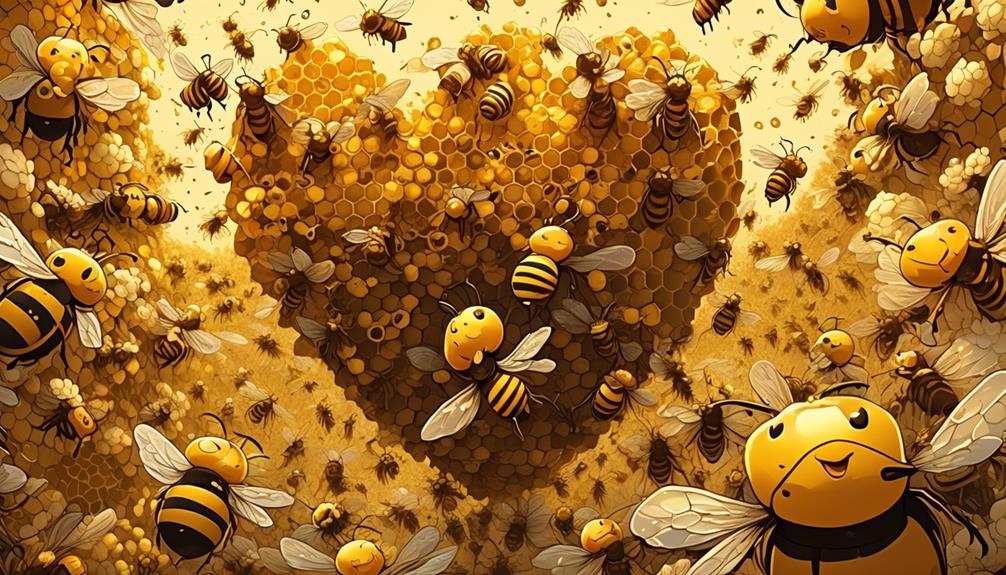
Diving into the intricate social structures of bee colonies, you'll find a complex hierarchy that plays a crucial role in the survival and efficiency of the hive. At the heart of this system, you'll find the queen bee, the only sexually mature female in the hive and the mother of all other bees. Her main function is to lay eggs and the control she exerts over the colony is chemical, through pheromones.
Then there are the worker bees, sterile females that perform a multitude of tasks. They're the hive's cleaners, nurses, builders, guards, and foragers. The division of labor is based on age, with younger workers tending to duties inside the hive, while older ones venture out to gather nectar and pollen.
Lastly, there are the drones, male bees whose only role is to mate with the queen. They're few in number and are expelled from the hive when resources are scarce.
This ruthless efficiency, based on a clear division of labor and singular focus on colony survival, is what makes bee colonies so successful. It's a natural marvel that continues to fascinate scientists and casual observers alike.
Impact of Bee Balling on Ecosystem
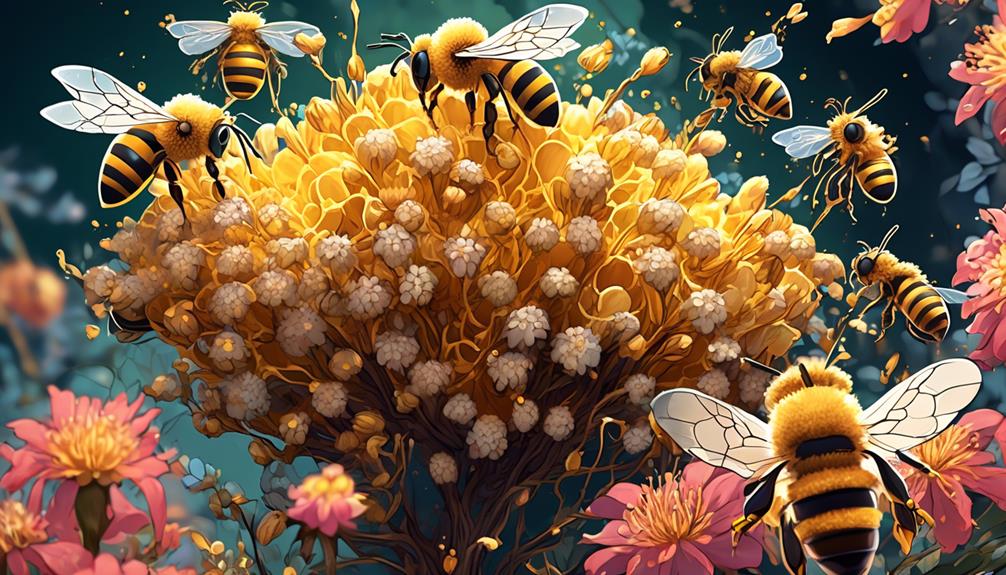
The phenomenon of bee balling, where a cluster of worker bees surround and essentially 'cook' an intruder to death, plays a significant role in maintaining the balance of our ecosystems. As a primary defense mechanism, this behavior aids in the preservation of bee populations by eliminating potential threats, such as predatory insects and even other bees.
Through this, bees contribute significantly to biodiversity control. By mitigating the spread of invasive species, they're helping maintain a balanced ecosystem. It's a natural form of pest control that reduces the need for human intervention, which can often have detrimental effects.
Bee balling also affects pollination, as bees are key pollinators in many ecosystems. By protecting their colonies, they ensure the continuation of plant reproduction, contributing to plant diversity and indirectly supporting other wildlife that rely on these plants for survival.
In a nutshell, while bee balling might seem a brutal act, it's a testament to the intricate workings of nature. So, next time you see a ball of bees, remember they're not just defending their hive, they're playing a vital role in preserving our ecosystems.
Frequently Asked Questions
What Is the Lifespan of Bees Involved in Balling?
You're asking about the lifespan of bees that ball up. It's not entirely clear, as their lifespan can vary widely depending on their role in the hive and environmental factors.
Worker bees typically live for a few weeks to a few months, while queen bees may live for several years. However, the stress of balling, which is a defensive behavior against threats, might potentially reduce a bee's lifespan.
Is There Any Specific Time of the Year When Bees Are More Likely to Form Balls?
You're right to wonder about seasonal patterns in bee behavior. However, bees don't necessarily form balls more frequently at certain times of the year.
Balling is a defensive behavior, typically in response to a perceived threat, rather than a seasonal activity. So, the frequency of balling can fluctuate based on the presence of threats, rather than the time of year.
It's more about the bees' environment than the calendar.
Can Bee Balling Be Observed in All Species of Bees or Is It Specific to Certain Species?
Not all bee species exhibit balling behavior. It's mostly observed in honeybees, specifically the European honeybee (Apis mellifera). This is a defense mechanism used to suffocate intruders, usually foreign queen bees or predatory wasps.
Other bee species like bumblebees, carpenter bees, or stingless bees don't typically display this behavior.
What Is the Role of the Queen Bee in the Bee Balling Process?
In the bee balling process, you might think the queen bee plays a significant role. However, she's actually the victim. Worker bees ball the queen to kill her, using their bodies to generate heat and carbon dioxide.
It's a brutal but effective method for colony control, often used when they've raised a new queen. So, the queen bee doesn't actively participate in the process, she's merely the unfortunate target.
Does Bee Balling Have Any Significant Impact on Honey Production?
Yes, bee balling can significantly impact honey production. When bees ball, they're not gathering nectar or producing honey. They're focused on protecting the hive, which hinders their normal duties.
Also, if the queen is killed during this process, it can cause a disruption in the hive's operations until a new queen emerges. This period of adjustment may further decrease honey production.
Therefore, bee balling does carry potential consequences for honey yield.
Conclusion
So, you've now grasped why bees ball up. It's a fascinating defensive tactic, isn't it?
This behavior, deeply rooted in their social structures, not only protects the colony but also impacts our ecosystem.
Remember, every little action in nature has a purpose and understanding these intricacies, like bee balling, can expand our appreciation for the natural world.
Keep observing, keep learning, because the more you know, the more you'll marvel at the wonders of nature.


